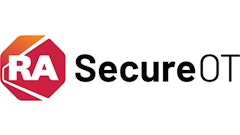
The Affordable Healthcare Act (AHA) is a game-changer for hospitals, with Medicare reimbursements tied to outcomes. It’s all about better treatment that produces better patient outcomes and shorter patient stays. The new reimbursement environment may drive the need for dramatic changes in how hospitals view their supply chain.
Supply Chain Considerations
First, hospitals can’t afford to make purchasing decisions that are solely based on cost. Purchasing needs to collaborate with physicians and other patient-care staff to determine the right products for supporting the best outcomes. Efficient, precise inventory management is more important than ever before.
The new outcome-oriented environment makes it imperative for supply chain managers at hospitals to understand the personal preferences of physicians. While new medical devices come out every year, doctors and nurses prefer certain instruments that allow them to be as productive as possible in successfully treating patients. Supply chain managers can create a team of cross-specialty physicians who can speak for everyone at the facility, providing insight into what they need to properly care for patients, and other items that sit in storage for months on end. Getting real-time feedback from doctors can ensure that supply chain managers get the necessary devices to maintain appropriate inventory levels.
Secondly, it is widely accepted that hospitals should prepare to reduce costs anywhere from 14 to 19 percent to address the impact of AHA’s reimbursement structure on revenues. With medical and surgical supplies representing the second largest hospital cost center behind patient-care staff, it’s logical to focus on reducing supply chain expense, including requisition. Since outcome is the new imperative, hospitals can’t afford to cut patient-facing professionals.
Thirdly, AHA’s outcome-based reimbursement schema may threaten the survival of small hospitals due to their paltry 2 to 3 percent net margin. Many may need to be acquired in order to reap the economies of scale and shared infrastructure under the sheltering wings of an integrated delivery network (IDN). Conversely, IDNs are looking to add to their hospital network to further spread out costs.
Bringing those acquisitions into the IDN’s fold is a challenge. With hospitals running on a variety of enterprise resource planning (ERP) systems, systems integration is typically a two-year process. Yet it is critical for an IDN to gain immediate visibility into its acquisition’s supply chain without disrupting the hospital’s operations.
Where can an IDN find an inventory management system that provides such an interim solution? Where does a hospital find a cost-effective system that supports efficient and precise inventory management? And finally, where can a hospital turn to reduce inventory requisition costs?
Answers in the Cloud
The answer to all three questions may be the cloud. Cloud computing was born out of the advent of the Internet. Simply put, software applications run on servers located on the Internet rather than computers running in an office.
Before we look at how a cloud application can address each of the AHA-driven trends specifically, it’s important to understand the inherent advantages of cloud computing. If I were to describe it in a catch phrase, it would be “less is more”—less software and hardware to purchase and maintain, less time to implement, less information technology (IT) involvement and less complicated to use. It all adds up to more cost advantages, more compliant use and a faster, greater return on investment (ROI).
The Right Quality, Quantity, Price, Place and Time
Reimbursement tied to outcomes measured by the number of days of admittance means that hospitals need to track not only the use and cost of supplies, medications, and treatment protocols on patients, but also the outcomes generated by these criteria. This helps purchasing and clinician teams assess the value of specific products in meeting outcome objectives.
Cloud-based inventory management data help clinicians determine which supplies, devices and instruments are most effective. A cloud-based system is agile, making it easy to update as new instruments and supplies are adopted for patient treatment, or as items are eliminated because they are deemed as not vital.
What’s more, cloud-based software can provide insight into actual cost-savings generated by replacing expensive, premium-brand devices and equipment with items from more generic companies offering lower prices. This data combined with outcome data can reveal cost cuts that could actually improve outcomes or have no negative impact. In either case, the hospital wins.
Reduced Requisition Costs
The second largest expense on a hospital's balance sheet (following labor) is supply chain costs. The quickest way to impact the bottom line is to unearth savings in the supply chain. For example, a hospital with a 3 percent net margin, which saves $100,000 in materials cost, would need to generate $3,333,333 in fees to bring that same $100,000 to the bottom line.
Numerous sources identify the top ways to curb medical and surgical supply spending:
- Conduct as much purchasing electronically as possible.
- Automate the procurement process—from the point of contracting to the point of payment—to streamline operations and boost efficiencies.
- Centralize purchasing across the organization to provide visibility into and control over as much of one's supply spending as possible.
- Develop a master data management strategy, including the use of global industry data standards, to ensure that critical information is kept updated, and there is one source of truth to feed clinical and financial IT systems.
- Understand the total cost of ownership of the supply chain: In addition to the price paid, consider the financial implications of procurement, logistics, inventory management, change, charge capture and reimbursement, among others.
- Create visibility into both the total cost and efficacy of the products being used in patient care, so as to determine the role supplies play in both the cost and quality of the care the organization provides.
- Focus on bringing more non-file and off-contract spend under contract, especially high-cost physician preference items.
- Save an estimated 1 to 3 percent in avoided overpayments by validating contract pricing and ensuring the most updated contract information is used.
In an annual benchmark study, the Aberdeen Group reported that healthcare enterprises significantly improved their performance as a result of an e-procurement initiative.
The study found that best-in-class healthcare enterprises utilize e-procurement technology to:
- Improve profit through the reduction of maverick spending and savings leakage.
- Automate the routine tasks of the inventory management function.
- Integrate with other IT systems to aid in decision-making and strategic planning.
- Ensure accurate order processing, financial reporting and vendor contract compliance.
- Reduce requisition-to-order cycle cost and time by automating workflows.
The research findings all support the progression of savings offered by software applications is continuing to accelerate. Yet there are a few snags that have stunted the widespread use of supply chain technology. For instance, why have so many hospitals let their ERP systems fall behind in keeping releases up to date? This is due, in part, to IT and training costs, as well as the potential interruption in business that can come with upgrading software on local servers.
This is when an inventory management and procurement cloud application shines. The application vendor is responsible for all system maintenance and upgrades. The system stays up to date with current industry standards without the expense associated with in- house systems. What’s more, cloud systems are typically sold on a monthly or annual subscription basis, making them easy to fit into a budget.
The Aberdeen study also uncovered another fly in the ointment: maverick spending that indicates inconsistent use of procurement systems. This finding highlights the need for making inventory management systems convenient and easy to use.
Let’s look at how cloud computing eases use and how it can address the compliance/maverick-spending dilemma. A key fob-sized barcode scanner worn on a lanyard would make it easy and inexpensive to track inventory. While radio frequency identification (RFID) may require zero human interaction, it is simply not economically feasible for tracking low-cost supplies. While the cost of this technology may be justified for chain-of-custody items like specimens and expensive devices and pharmaceuticals, logic dictates that the value of merchandise should be tied to the cost of the technology to track it.
Supply Chain Visibility in Days—Not Weeks or Months
The sooner IDN and hospital supply chain managers are able to effectively keep track of their item files, stay updated on contract pricing and validate prices against purchase orders, the faster an acquisition can reduce costs. As previously discussed, cloud-based inventory management solutions allow hospitals to quickly see an ROI because they don't need to purchase expensive hardware and the technology doesn't require a lot of training to use. Supply chain managers who use the cloud to manage their inventory have greater visibility into what items need to be ordered to ensure physicians have a strong supply of what they need.
There is no easier and faster way to set up and use an inventory management system than one that resides in the cloud. It’s a matter of logging in, configuring vendors and supplies, and you’re done in less than a week. Compare this arrangement with a traditional system that requires expensive hardware, software and extensive (and expensive) IT involvement that can actually cause inadvertent delays.
In summary, a cloud-based inventory management and requisition solution effectively provides precise inventory management, reduced inventory requisition costs and immediate supply chain visibility for the new outcome-based Medicare reimbursement environment under the Affordable Healthcare Act.



















